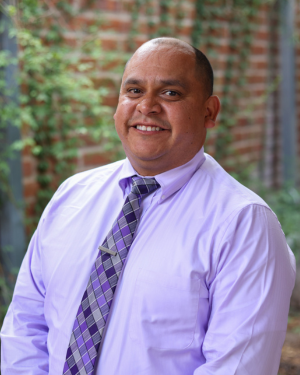In honor of AP Week, School of Thought asked me to reflect on work that I’m most proud of as a school leader. I have chosen to share about implementing restorative practices, which many of my colleagues are also working hard to get right in schools across the country.
In the last two years, Vail Academy and High School (VAHS), which is housed at the University of Arizona Tech Park, has seen several new families join our learning community. Students come to us from various backgrounds and educational experiences, such as charter schools, online, hybrid, or home-school models. At VAHS, we recognize that at-risk students need more help adjusting. So, our staff puts interventions in place as quickly as possible for those who need extra support.
This year, our cohort of assistant principals in the district has embraced the idea of building restorative practices into our interventions. Using restorative practices allows us to hold students accountable for disruptive and defiant behavior. We have been intentional about learning how to launch restorative practices on our campuses. When dealing with discipline, such practices have allowed us to explore alternative consequences and maintain relationships among teachers, students, and families.

The idea of restorative practices is based on the concept of relationships and understanding that students are most successful in a school setting and not in in-school suspension, out-of-school suspension, or alternative suspension programs. Rather than relying on punitive consequences, we pair strategies with accountability projects and build better relationships with students. There is still a place for traditional consequences to be upheld. However, this approach allows us to select from a menu of ideas when working with the student or family to determine the best method for changing behaviors.
The use of restorative practices emphasizes trying to understand the why and the mindset of the student rather than focusing on punitive consequences. After attending a professional development training led by education consultant Kelvin Oliver whose organization, Leaving the Village, specializes in restorative practices, I returned to campus and changed how I asked questions during investigation interviews by asking questions such as: “What were you thinking at the time?” By doing so, I try to get a better understanding of the student’s state of mind. Or I may ask, “Who has been affected and in what way?” I will likely close my questioning with, “What do you think you need to do to make things right?” In making these slight adjustments, I have become more mindful of ways students can be held accountable for their behaviors and learn more about what they did wrong.
I believe that carefully listening to students can help change behaviors and allows educators to evaluate the discipline decision-making process. According to Oliver, one question that should be asked is, “What potential problems might be created by the decision I’ve made?” For example, if I decide to give a student a long-term suspension, what impact will it have on their ability to learn, and will I change the behavior? I have found that parents appreciate this approach of slowing down and searching for appropriate consequences. Trust with parents is established when we can hold their child accountable without rushing to implement a suspension and inadvertently creating additional learning loss.
Schools or assistant principals interested in learning more about implementing restorative practices should start by researching available resources. My own search for resources led me to start incorporating the interview questions I mentioned earlier and creating accountability projects (such as a poster or presentation that enables a student to take responsibility for their role in the harm they caused and apologize). These student-based projects can be presented to those affected by their behavior. It becomes the ultimate win-win approach when students can remain in the classroom and rebuild damaged relationships while being treated with dignity and respect.
I’m still building my toolbox for effective discipline and working on the logistical challenges for a campus of our size. We are quite small, with an enrollment of 575 students and a staff of 50 faculty members. I have already seen a difference in the decrease in suspensions and frustrated parents this year. Although it is a work in progress, I know that my efforts are paying off.
Have an assistant principal you’d like to celebrate during Assistant Principals Week, April 3-7? Send them an e-card.

